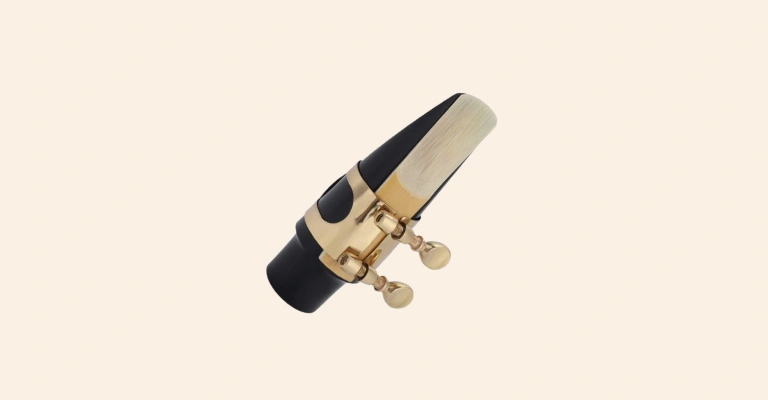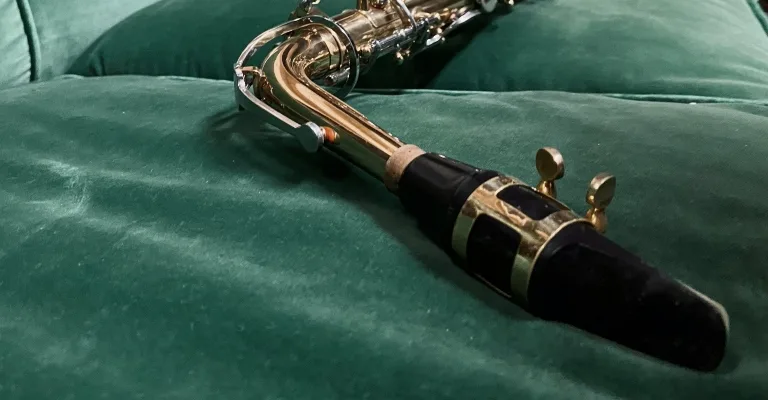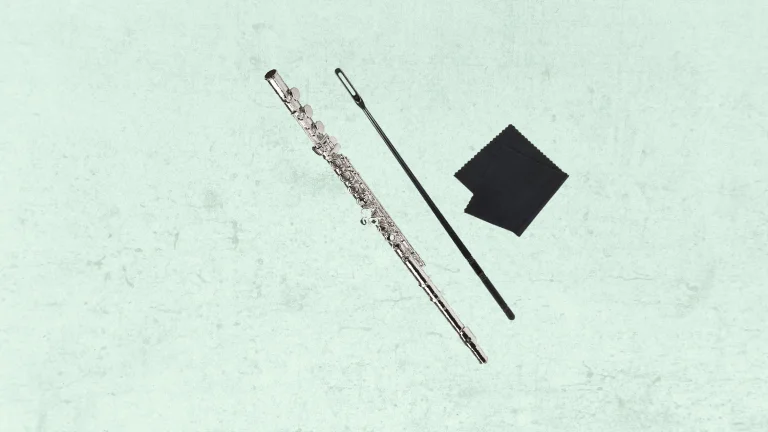It can be difficult to put a reed on a saxophone mouthpiece properly. Especially, if you have never done it before.
But there’s a right way to do it which will allow you to get the best sound and make playing easier.
In this small guide, I will show you how to put reeds on a sax. Let’s dive in.
1. Make Your Reed Wet
The first step is to wet the thin end of a sax reed with your mouth. Five to ten seconds is enough.
Next, turn it around and wet the flat part of your mouthpiece where the reed goes. We need just enough moisture to act as a sort of glue to stick the reed to the mouthpiece. Creating a tight seal is crucial to ensure high-quality sound.
2. Attach Reed And Ligature

Now, put your reed in place by lining up its rounded tip with the rounded tip of the mouthpiece. The two flat surfaces should stick together thanks to your saliva.
Loosen the screw or screws before placing the ligature over the mouthpiece and reed. It should be placed below the part of the reed that is cut or filed and centered on the reed.
There are many different types of ligatures – some have screws on the bottom, and some have screws on top.
If you’re not sure about the direction of your ligature, a helpful tip is that the screws will be on the right side.
3. Tighten The Screws
Make sure to tighten the screws in the right way. There must be a slight movement of the reed.
Ensure you have enough lighting for the precise adjustments to come. Also, make sure the sides or rails are perfectly lined up with the rails of the mouthpiece.
Additionally, align the tip of the reed with the tip of the mouthpiece. Your sax reed should stay put as you make these fine-tuning adjustments.
4. Final Adjustments

In the last step, take your time to get everything right. A poorly lined-up reed will not play well. The sound quality will be poor, and you might experience squeaks and squawks while playing.
After you line up the reed, adjust the ligature to center it on the reed and the mouthpiece.
Finally, tighten the ligature screws the rest of the way and make them quite tight. You don’t want the reed to move at all while putting the mouthpiece on the neck cork or adjusting its position.
Conclusion
It’s important to put a reed on a saxophone mouthpiece correctly. You will get the best sound quality and playing will be easier. Although it might seem difficult, I hope now you know it’s easy. Just take your time during the process and make the necessary adjustments.





